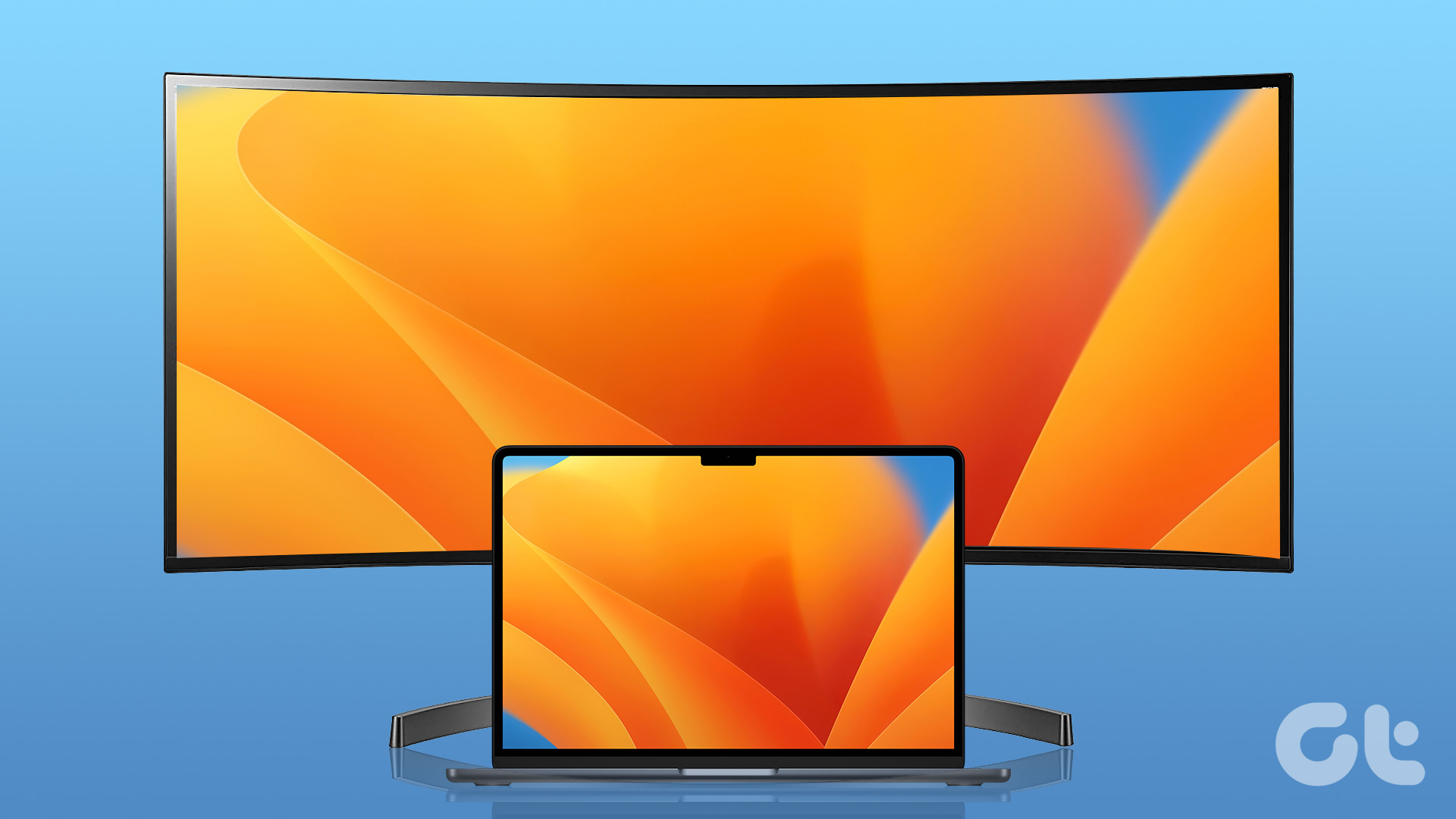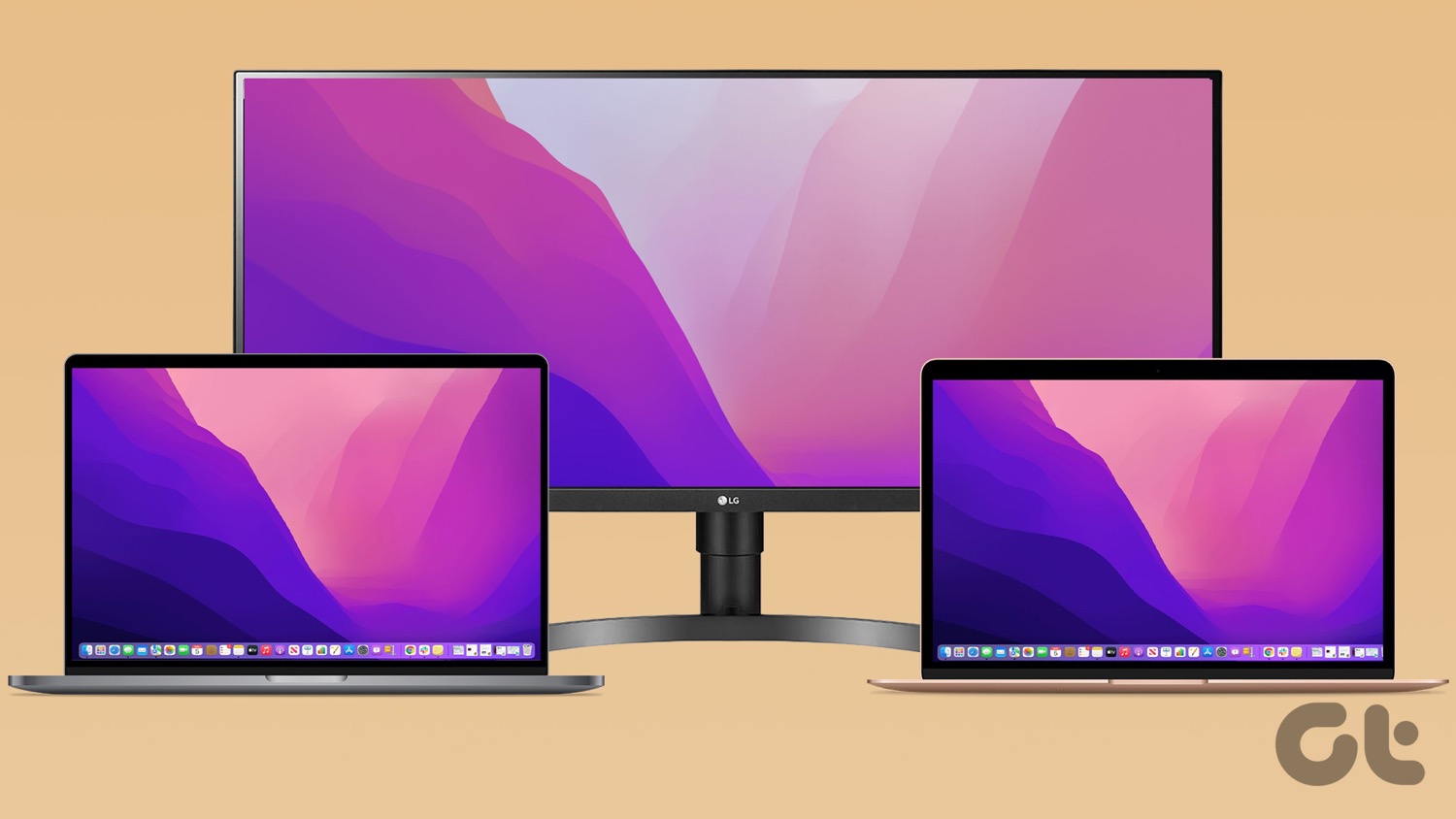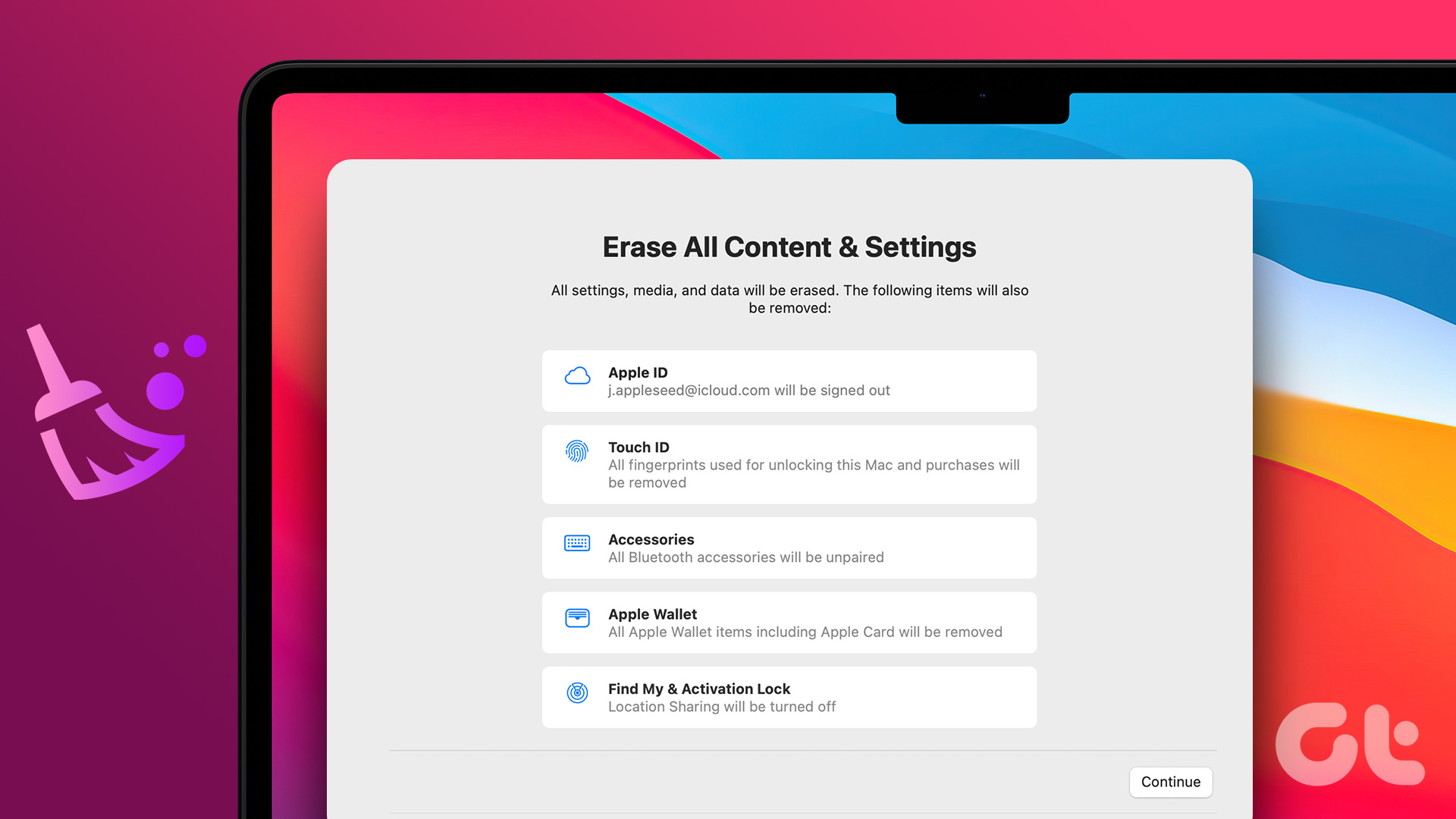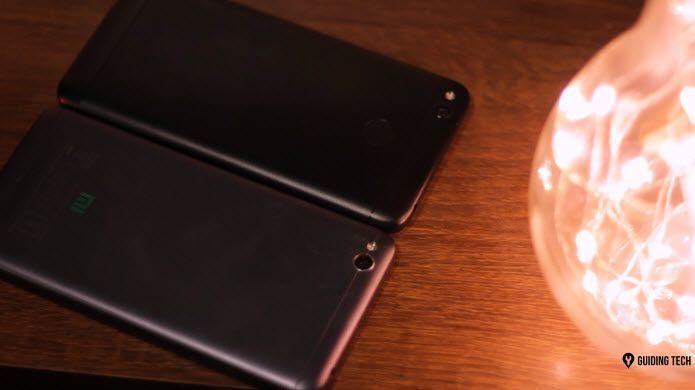To say that Apple had an eventful start to the new year would be a bit of an understatement. We say this, as the Cupertino tech giant unveiled a slew of products within the first two weeks of 2023. These include two new MacBooks with never-seen-before SoCs, namely the M2 Pro and the M2 Max chipsets. Understandably, there is a lot of commotion on the interwebs and we wouldn’t blame you if your search history is flush with queries pitting the M2 Pro MacBook Pro vs the M1 Pro and the M2 MacBook.
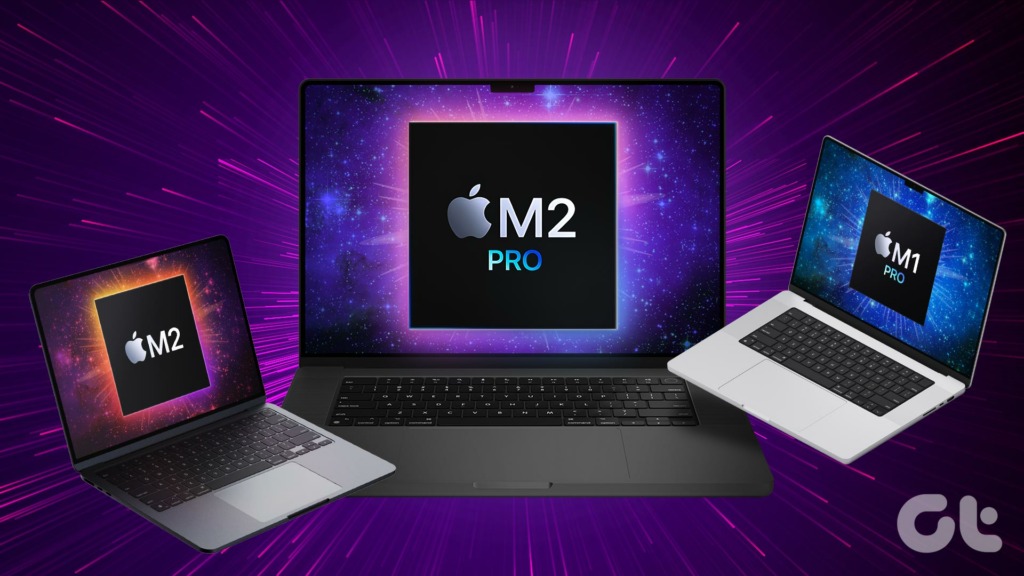
After all, Apple’s laptop verbiage has gotten a bit out of hand. As such, it can be tricky to understand the key differences between the all-new M2 Pro MacBook Pro and the M1 Pro and M2 MacBooks from last year. So, if you find yourself at a similar crossroads, read on.
Key Differences Between M2 Pro MacBook Pro, M1 Pro MacBook Pro, and M2 MacBook Pro
Before we get into the nitty-gritty of the comparison, you should take a look at the spec differences that set our three contenders apart. We have attached a handy table for your perusal, so take a gander.
| M2 Pro MacBook Pro | M1 Pro MacBook Pro | M2 MacBook Pro | |
| Size | 0.61 x 12.31 x 8.71 inches | 0.61 x 12.31 x 8.71 inches | 0.61 x 11.97 x 8.36 inches |
| Weight | 3.5 lbs | 3.5 lbs | 3 lbs |
| Display | 14.2-inch, mini-LED 3,024 x 1,964 pixels | 14.2-inch, mini-LED 3,024 x 1,964 pixels | 13.3-inch, LED-backlit 2,560 x 1,600 pixels |
| Refresh Rate | Up to 120Hz | Up to 120Hz | 60Hz |
| Peak Brightness | 1,000 nits sustained 1,600 nits (HDR) | 1,000 nits sustained 1,600 nits (HDR) | 500 nits |
| Processor | M2 Pro Up to 12 CPU cores Up to 19 GPU cores | M1 Pro Up to 10 CPU cores Up to 16 GPU cores | M2 8 CPU cores Up to 10 GPU cores |
| Webcam | 1080P FaceTime HD | 1080P FaceTime HD | 720P FaceTime HD |
| TouchBar | No | No | Yes |
| TouchID | Yes | Yes | Yes |
| MagSafe charging | Yes | Yes | No |
| Price | From $2,000 | From ~ $2,000 | From $1,299 |
Design
First and foremost, let’s take a closer look at the design of the three MacBooks. Now, you should know that the MacBook Pro with the M2 Pro chip looks eerily similar to the MacBook Pro with the M1 Pro chip launched back in 2021. In fact, the laptops even sport the same dimensions. To that end, both laptops measure in at around 0.6 x 12.31 x 8.71 inches. What’s more, the devices weigh the same too and at 3.5 pounds, are among the more portable workhorses in the market.
The MacBook Pro with the M2 chip, on the other hand, is a different beast altogether. As a matter of fact, the device draws more parallels to the M2 MacBook Air, than it does to its prosumer siblings. To that end, you can only get the M2 MacBook Pro with a 13.3-inch display. Understandably, the device dwarfs in comparison to its 14-inch counterparts and is much more compact.
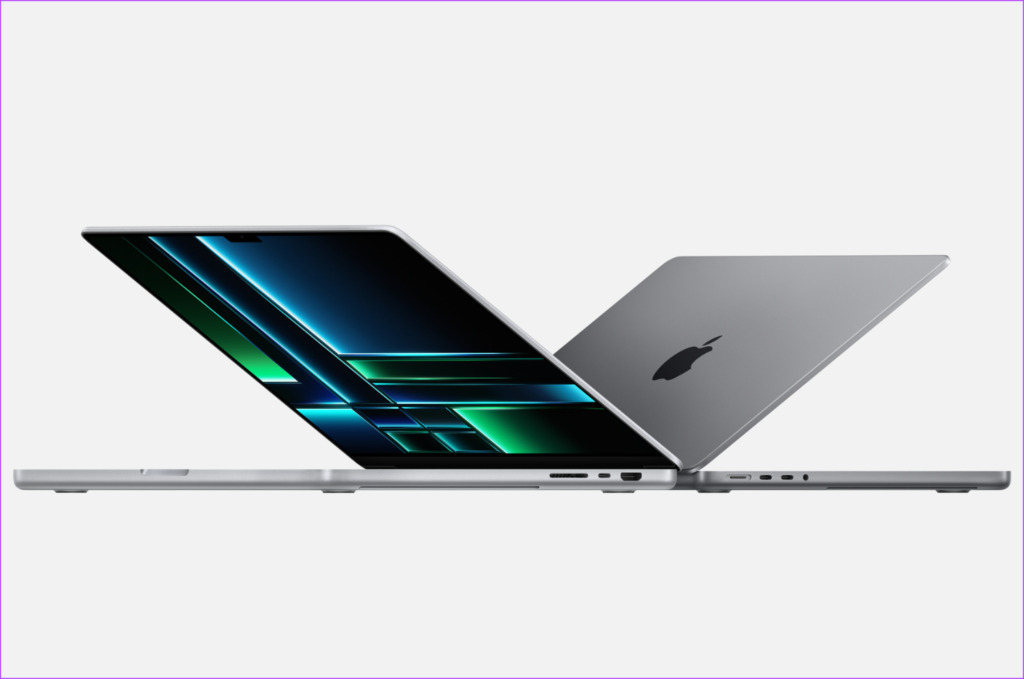
To give you a better picture, the laptop measures 11.97 inches in width and is sleeker at 8.36 inches as well. It also weighs less at three pounds, making it a great fit for those who are always on the go. Be that as it may, all three notebooks employ 100 percent recycled aluminum as well as 100 percent recycled rare earth elements in all the magnets. As such, the laptops don’t just feel sturdy and luxurious but are reasonably eco-friendly too.
With that said, the M2 MacBook Pro will leave you wanting more in the I/O department. In fact, unlike the 14-inch variants, the M2 MacBook Pro only comes with two Thunderbolt 4 connectors. On the flip side, the M2 Pro and the M1 Pro MacBooks feature three Thunderbolt 4 ports, a full-sized HDMI connector, and an SDXC card slot.
So, if you tend to connect multiple accessories to your machine, then you might want to cop the bigger-sized, 14-inch MacBook Pros. Else, we’d recommend you invest in a dongle when you place your order for the 13-inch M2 MacBook Pro.
Keyboard, TrackPad, and Touch ID
No surprises here, the MacBook Pros with the M2 Pro and the M1 Pro chipsets feature the same keyboard layout too. To that end, the keyboard deck on both machines ships with 78 keys, including 12 full-height function keys. The 13-inch MacBook Pro with the M2 chip, on the other hand, trades the function row in favor of a touch bar.
Now, depending on your use case, you might find one arrangement better than the other. The touch bar does allow you to quickly variate the volume toggle by moving your fingers on a slider, among other things. That said, the 14-inch MacBooks might be a better fit for someone who is coming from a machine with a dedicated function row, to begin with.
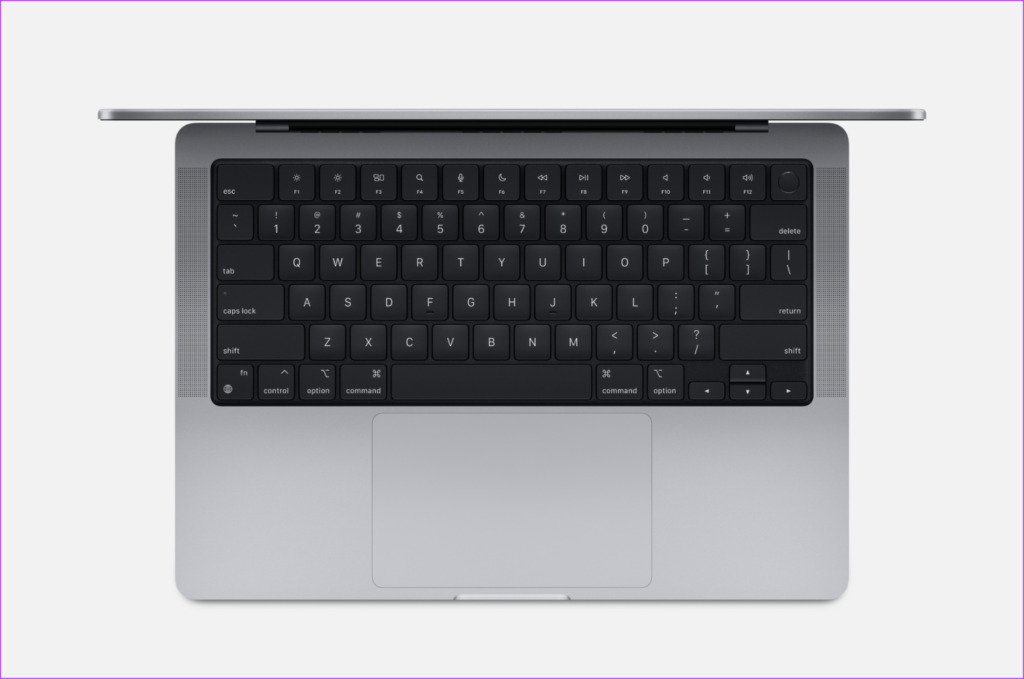
We’d also like to point out that while all three laptops come with TouchID for seamless biometric authentication, the sensor on the 13-inch MacBook Pro sticks out. On the contrary, the unit is integrated within the power button on the 14-inch models.
Other than that, all three laptops ship with arrow keys positioned in an inverted-T arrangement. Do note that the arrow keys aren’t too accommodating, so you will struggle with them if you have pudgy fingers.
The laptops employ the same Force Touch trackpad with pressure-sensing capabilities too. Consequently, you should be able to use the same TrackPad gestures on all three machines. As for the webcam, the M2 MacBook Pro ships with a 720p Facetime HD camera.
That said, the M1 Pro and the M2 Pro models feature a 1080p FaceTime HD camera. So, if your work requires you to take a lot of video calls, you might want to opt for laptops with more pixel-dense cameras.
Display
The MacBook Pro with the M2 Pro chip is furnished with the same display as seen on its predecessor. Spec-wise, the screens on the M1 Pro and M2 Pro models measure 14.2 inches, and the displays are backed by mini-LED technology. For those unaware, mini-LED panels employ smaller-sized LEDs as opposed to a run-of-the-mill LED display.
As such, these screens feature more dimming zones and can overturn deeper blacks with better contrast than the panel on the M2 MacBook Pro. That’s not all, as the displays are more pixel-dense at 3,024 x 1,964 pixels as well. To give you a better picture, the M2 MacBook Pro’s display caps out at 2,560 x 1,600 pixels.

While all that’s good and dandy, we will admit that the screen on all three MacBooks is plenty sharp for watching movies on the fly. The metric you should be concerned with though is the screen’s peak brightness levels. Here, the pro-grade MacBooks leave the M2 MacBook Pro in the dust.
In fact, per Apple, the displays on the M2 Pro and the M1 Pro models maxes out at 1,000 nits for everyday use and 1,600 nits for HDR content. In comparison, the M2 MacBook Pro’s display maxes out at just 500 nits.
Rest assured, you won’t have to squint your eyes when viewing content on the M1 Pro or M2 Pro MacBook Pro’s display under the sun. Making matters worse, the M2 MacBook Pro doesn’t support Apple’s ProMotion tech either. So, while the display on the 14-inch models refreshes at up to 120Hz, buyers opting for the M2 MacBook Pro will have to contend with a 60Hz screen.
Suffice it to say, the displays on the M1 Pro and M2 Pro MacBooks are in a league of their own. If anything, the screens ship with a notch, which could be construed as a deal-breaker by some. So, if you want a notch-free display, the 13-inch M2 MacBook Pro is your best bet.
Performance
It can be difficult to understand the performance differences between Apple’s latest MacBooks. The M1 Pro and the M2 Pro chipsets, for instance, can be copped in multiple SKUs. So, to eliminate confusion, here’s what you should know about Apple’s pro-grade processors.
Both, the M1 Pro and the M2 Pro can be configured in three different ways. The lowest prosumer tier is when you have the chipset with the least number of CPU and GPU cores. In the case of the M1 Pro, you will have eight CPU cores and 14 GPU cores. Out of the eight CPU cores, six are performance cores and the remaining two are efficiency cores.
Also read: How to use low power mode on a Mac?
The M2 Pro, on the other hand, comes with a 10-core CPU and a 16-core GPU for the base model. Out of the 10 CPU cores, eight are P-cores and two are E-cores. As you climb up the ladder, both, the CPU as well as the GPU get some additional cores.
Consequently, the M1 Pro MacBook features a ten-core CPU and a 16-core GPU. The M2 Pro’s upgraded tier, on the other hand, ships with a 12-core CPU with eight P-cores and a 19-core GPU. Finally, the Max variant of the M1 and M2 chipsets incorporate the same number of CPU cores as found in the previous tiers respectively.
However, the M1 Max and the M2 Max ship with a lot more GPU cores, with the former utilizing a 32-core GPU and the latter featuring a 38-core GPU. On the flip side, the M2 SoC powering the MacBook Pro 13-inch comes with an eight-core chipset with four performance cores and four efficiency cores. It also features a 10-core GPU.
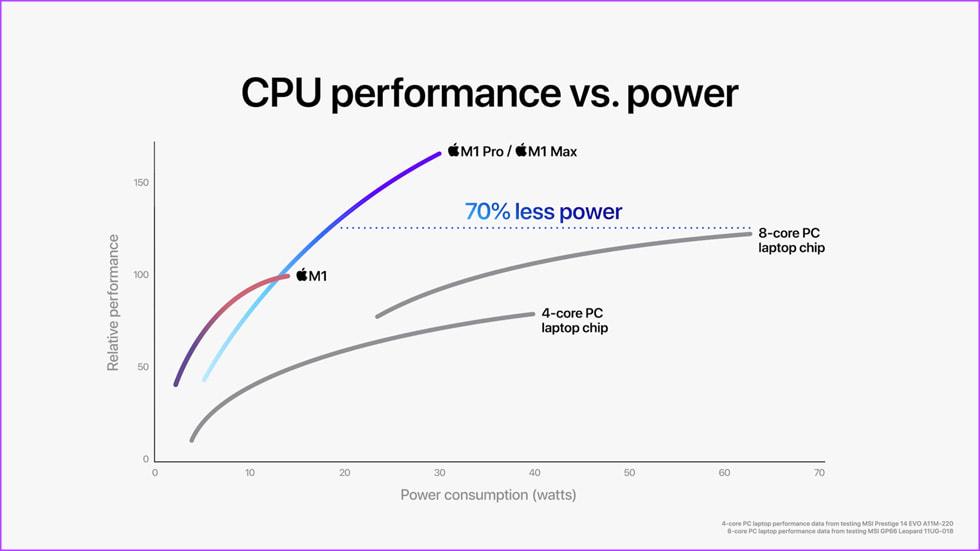
On paper, the M2 Pro MacBook is the fastest laptop of the lot. Now, you will have to wait for the reviews to truly gauge the machine’s capabilities. However, Apple has provided some benchmark figures that should give you a better picture. To wit, the M2 MacBook Pro has a memory bandwidth of 100GB/s. The M1 Pro and M2 Pro MacBooks, on the other hand, offer a higher memory bandwidth of 200GB/s.
Furthermore, while the company has not compared the M1 Pro and the M2 chipsets directly, we can infer the performance difference by pitting them against the M1 chipset launched back in 2020. To wit, per Apple, the M1 Pro is up to two times faster than the M1 SoC. In comparison, the M2 SoC is only 18 percent faster than the company’s M1 chipset. Therefore, we can extrapolate that the M2 SoC is in fact, a touch slower than the M1 Pro chipset.
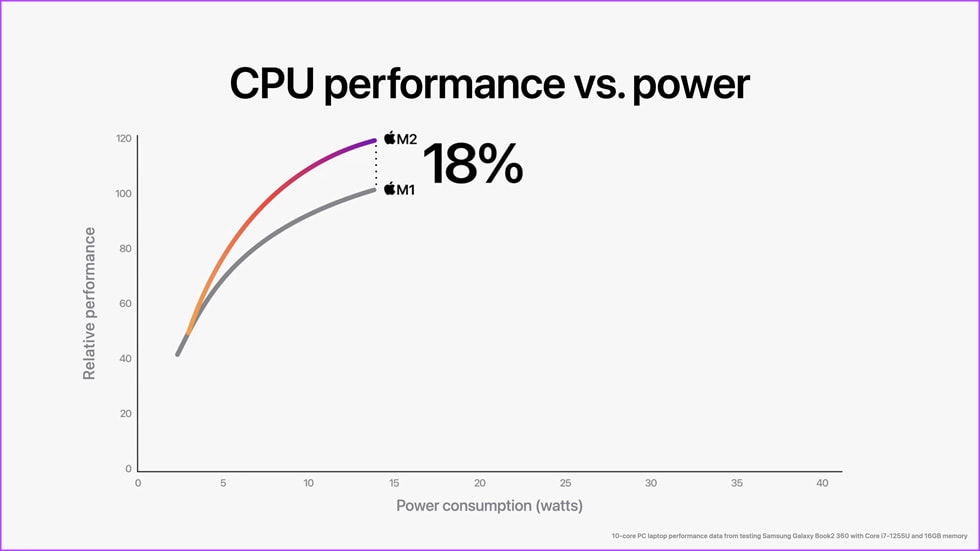
Between the M1 Pro and the M2 Pro, the M2 Pro is noticeably quicker too. For one, the chipset comes with 40 billion transistors, which is 20 percent more than what you’d get with an M1 Pro-backed MacBook Pro. As a result, the M2 Pro can execute tasks much more quickly.
For instance, Apple claims that the M2 Pro MacBooks can process images up to 40 percent faster than an M1 Pro MacBook in Adobe Photoshop. An M2 Pro MacBook can even transcode videos quicker and is faster than even an M1 Max chipset when rendering animations, upscaling images, or compiling code.
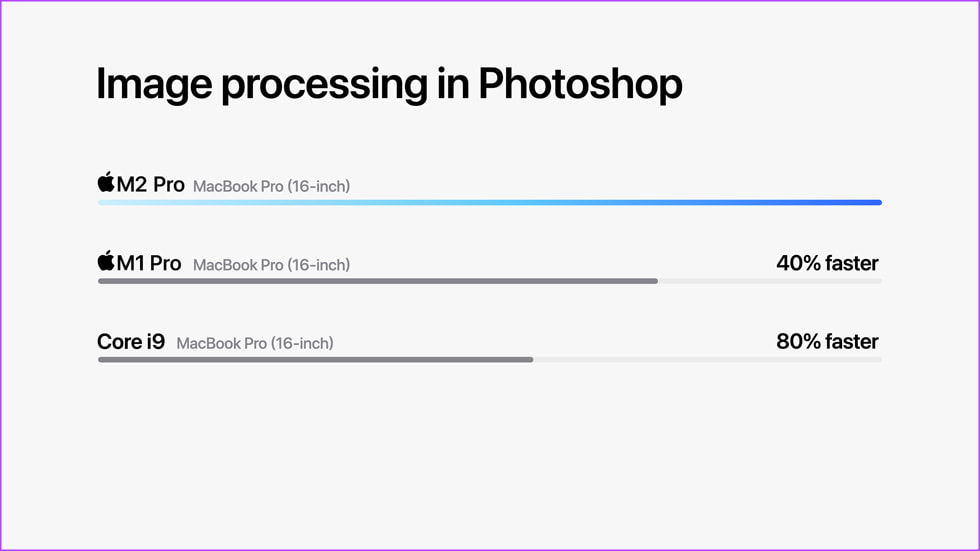
In a nutshell, the processor offers up to 20 percent better CPU performance and up to 30 percent better GPU performance than an M1 Pro chipset. Do note that you should get better insights as and when the reviews for the new MacBooks go live. But, for now, it’s safe to say that while the M1 Pro MacBook is plenty capable, an M2 Pro MacBook is just that much faster.
Should You Buy the M2 Pro Macbook Pro
Performance differences aside, the M1 Pro-backed, 14-inch MacBook Pro is a facsimile of the newer 14-inch model with the M2 Pro chipset. In terms of pricing, the M1 Pro model is no longer listed on Apple’s official website. However, you can cop the model with 10 CPU cores for around $2,300 from e-commerce portals like Amazon.
The M2 Pro-backed MacBook Pro with 12-cores is currently listed at $2,499 on Apple’s website. It remains to be seen whether the notebook is worth its steep price tag. That said, if the company’s performance figures are anything to go by, the laptop is a solid performer. Even so, we wouldn’t recommend buyers jump the gun and purchase the laptop, especially if they have an M1 Pro-backed MacBook at their disposal.
The M2 MacBook Pro, on the other hand, is more similar to the M2 MacBook Air, than it is to its pricier siblings. The key difference between the M2 Air and the M2 Pro is that the latter comes with a fan, which will kick in when you’re subjecting the processor to strenuous workloads. As a result, the laptop should – at least in theory – perform a bit better. All said and done, Apple’s latest offerings bring a slew of upgrades under the hood. Do let us know which MacBook Pro you’d like to buy in the comments below.
Last updated on 23 January, 2023
The above article may contain affiliate links which help support Guiding Tech. However, it does not affect our editorial integrity. The content remains unbiased and authentic.

